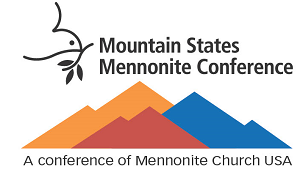The October Zing! introduced the conference to Rob Burdette as transitional pastor at First Mennonite Church in Denver and Tom Kauffman as transitional pastor at Albuquerque Mennonite Church. Sojourn’s web page introduces Ken Pilot as interim pastor in Fort Collins. The September Zing! introduced us to Linford and Mary Etta King as transitional conference ministers, arriving in November.
What happened to the days when churches simply hired their next pastor?! The idea of “transitional” leadership developed from the recognition that it is important to be deliberate in thinking about transitions in church leadership. This article provides some basic information and links to resources.
Background and Resources on Transitional Ministry
Transitional leadership can be particularly important after a long-term pastorate, or when a church is facing a crossroads of some kind, wants to be strategic about defining its vision, or has dealt with difficult issues. It is a sign that leadership has thought deliberately about transition and sees the opportunity it presents; a transitional pastor serves a defined role, and is not auditioning for a longer-term pastorate in the congregation. Specific training for the role helps these pastoral leaders provide a skill set beyond that provided in normal pastoral training. Rob Burdett and Tom Kauffman have described their roles on their congregations’ websites.
Merv Birky, pastor at Beth-El Mennonite Church in Colorado Springs, recently completed a sabbatical during which he studied the role of transitional pastors. He reports on his findings and thoughts in the October issue of the church’s newsletter, available from the church office. Merv discusses a number of different forms that a transitional role can take, from transitional pastor to interim pastor to visional pastor to pastoral succession, in which a new pastor is called to work alongside the existing pastor before becoming the lead. A major emphasis in Merv’s summary is the importance of recognizing that the transitional role needs to be considered carefully and should be tailored to the goals of the congregation. Our conference is fortunate that persons with skill in deliberate transitions are in our midst.
The MC USA Leadership Development Pastor Congregation Packet includes resources to help in an effective pastorate, with resources useful at the beginning of a pastorate all the way through guidelines for the exit interview, and including a separate packet for pastor congregation evaluation. Hopefully these resources have ensured an effective pastor-congregation relationship throughout the pastorate! At some point, every pastorate comes to an end, and the pastor’s role at that time is to “finish well,” as Merv emphasized. The pastor can finish best if congregational leadership and the pastor work together to determine priorities even at that stage of the pastorate, along with meaningful recognition and celebration.
The Leadership Development section of the MC USA web page provides resource packets for ministry transitions. The Search Committee Version of the packet includes a Transitional Pastor Policy adopted in 2010. It describes the role and qualifications for transitional pastors, sometimes referred to as intentional interim pastors and addresses employment issues peculiar to the transitional role. The Pastor Congregation Relations web packet also contains a document on “Intentional Interim Pastoral Ministry.”
Roles in Discerning the Shape of Transition
While the pastor can give input, it is also important to recognize that the departing pastor does not have a significant role in determining the congregation’s next steps, or in deciding whether a period of transition would be helpful before searching for a long-term pastor. Also, particularly if the pastor may remain in the same area as the church s/he is leaving, it can be important for the pastor and congregational leadership to prepare a covenant or agreement about understandings. The revision of MC USA’s A Shared Understanding of Church Leadership addresses this in a stronger way than in previous versions. Herm Weaver and conference leadership modelled this through the public covenant published in the August 2015 issue of Zing!
Congregational leadership should take the lead in determining the shape of the new leadership role. Perhaps the most important aspect of this role is to be deliberate. Congregational leadership may choose not to seek transitional leadership, but even that decision is best made deliberately. Also, it is important to recognize that congregational leadership may not be able to recognize what may be most helpful and effective, or even what resources are available. Conference ministers can have an important role in helping congregations determine what the most effective leadership model and transition can be.
In the same way, conference leadership, in consultation first with the denominational minister and then with the delegates at the August assembly, discerned that transitional leadership would be important for the conference as a whole. The Kings will be beginning about the time this article is published, and we can anticipate hearing from them as they help our conference in a time of deliberate transition.
